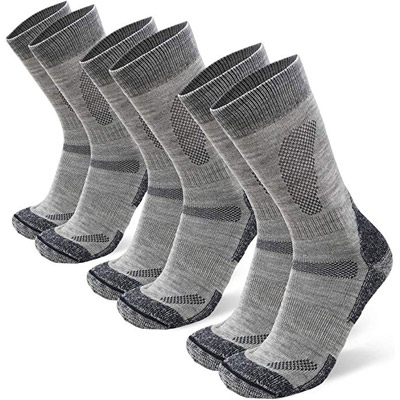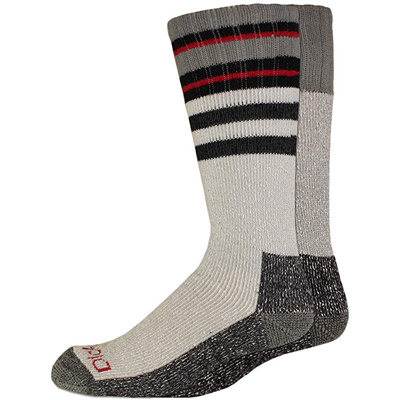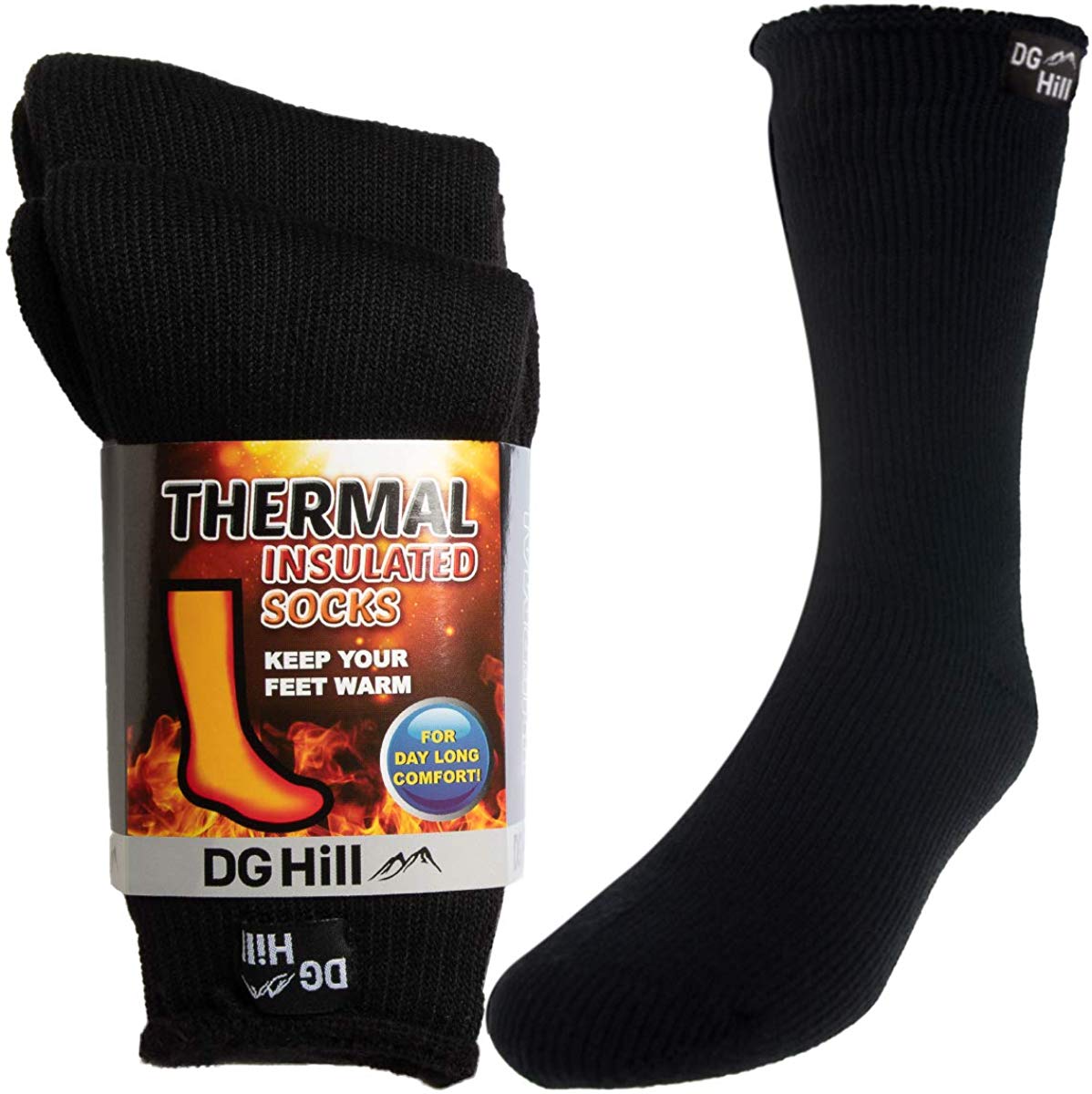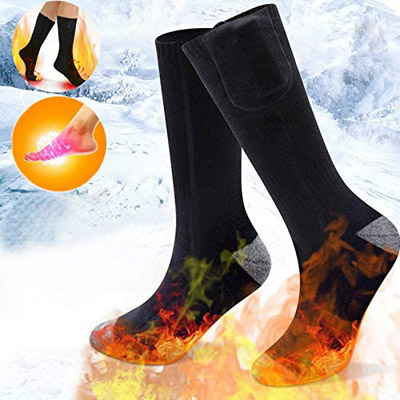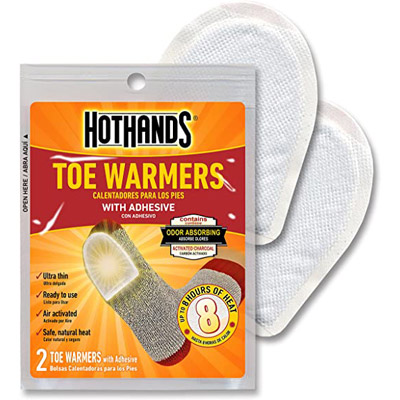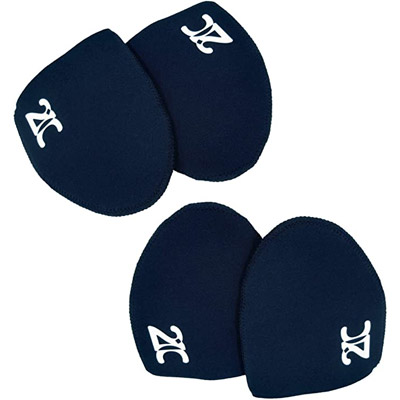Winter Socks
Thermal socks to keep your feet warm during the winter months, hiking, casual, work, and self heated.
![]() This is the UK page | Go
to US page
This is the UK page | Go
to US page
![]()
Thermal socks are a winter must-have when the temperature starts to fall. There's not much that is more miserable than having cold feet which can happen even if the rest of you is nice and warm.
Before you rush out to buy the first pack you see with pictures of flames (!) or words like "super-thermal" or "heated" on them, here's some things to take into account.
Insulation
The job of winter socks is to provide extra insulation and warmth and also wick sweat away from your feet to keep them dry. You shouldn't wear more than two pairs of winter socks, and more often than not a single pair is enough. Modern winter boots come with varying degrees of insulation for different conditions and all are designed to be worn with one or maybe two layers of socks, or one layer of liner socks and a top layer of thicker, warmer socks. Gone are the days when the only solution was to wear too-big boots and lots of socks.
If you always suffer from cold feet and can't ever find any warm enough socks, you probably need to get some better insulated boots, they'll be harder wearing too and probably cheaper in the long run.
Materials
Unfortunately there is no perfect sock material, they vary in how hard wearing they are, how warm, how comfortable and how expensive, it's all a compromise.
Wool is the best material for warmth and merino wool is premium. Wool is an excellent insulator, it is soft and cushioning, naturally odour resistant and still a very effective insulator when damp or even wet. It is also good at wicking sweat away from your feet keeping them dry. Look for socks that are around 70% or more wool but avoid 100%. Usually there is some percentage of synthetic fibres which make the socks harder wearing and give elasticity to help keep them up and stop them going baggy.
Acrylic, a knitted synthetic and a good budget choice. Similar to wool in look and feel, but being a synthetic these are not as odour resistant or as good at wicking moisture than wool, they can be about a third of the price though. May be vegan if there's no wool mixed in.
Other synthetic fibres, polyester is sometimes used as a substantial constituent in a fibre mix and is similar in properties to acrylic and is particularly quick drying. Others such as nylon, spandex, and elastane are there in smaller quantities to increase durability and add elasticity.
Cotton, this is the worst choice for a winter sock, though very commonly found and bought. It is not a good heat retainer and doesn't wick moisture well at all, hanging on to it and drying slowly. Cotton can be looped or brushed to give a plush finish which feels like it will be warm and cozy. Cotton fibres have evolved to help the cotton plant spread its seeds, wool has evolved to keep sheep warm and safe in even the coldest and wettest conditions, it's not hard to guess which will be the best material for a winter sock.
Cotton is comfortable, hardwearing and fairly cheap which explains its popularity even for winter socks.
Sock liners made from synthetic materials are similar to cotton and much better because they are very good at doing what cotton doesn't which is wick sweat away, put a pair of thicker wool or acrylic socks over the top.
Circulation
You need to make sure the rest of your body is warm enough, there is much truth in the Inuit saying
"If your feet are cold, put on a hat."
Your feet are an extremity and if you are losing body heat too quickly, the response of your body is to reduce blood flow to the extremities in order to keep the core warm. This means that your feet (along with hands) are often the first parts of your body to feel the cold. So make sure your body core temperature is warm and stable first and make sure you have a warm hat on. The effect won't be immediate but it will be real.
Another circulation issue is to make sure that blood can flow easily around your feet and legs by not wearing too close fitting pants and in particular don't try to force extra pairs of socks into already close fitting footwear. You will squash the air out (air is the real insulator) and reduce blood flow.
Recommended Winter Socks
Merino wool socks, best overall performance

Smartwool Trekking Heavy Wool - Men's
|
Women's
more Smartwool
here
Work socks, warmth with durability and odor defence
Heated socks, socks that are heated from a rechargeable battery pack. Some socks described as "heated" simply aren't, they just insulate like any others, I don't know how they get away with it. These actually do what they say.
Liner socks, way better performance than cotton for inner socks
Feet / foot / toe warmers
Air activated
heating pads
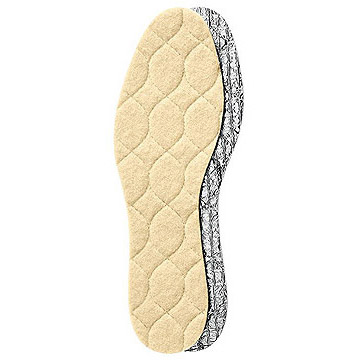
Thermal Insoles
Give an insulating boost
to the footwear you already have

